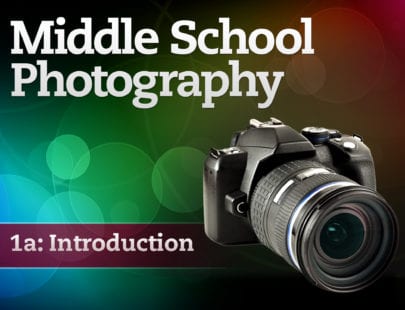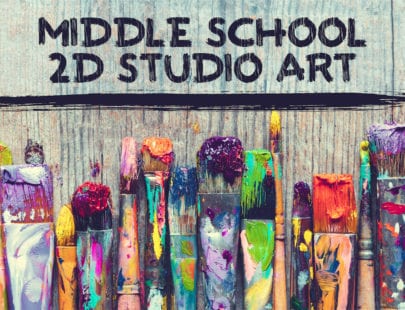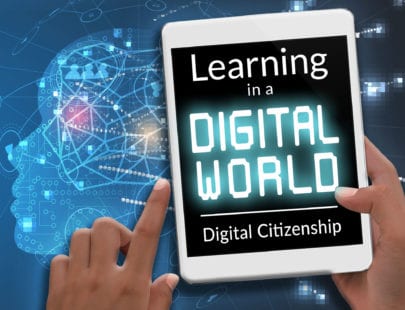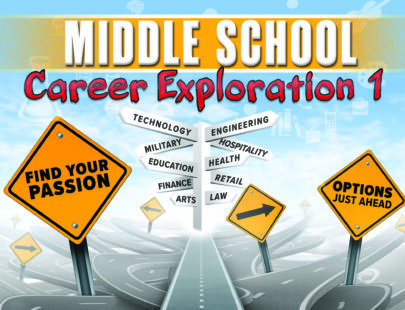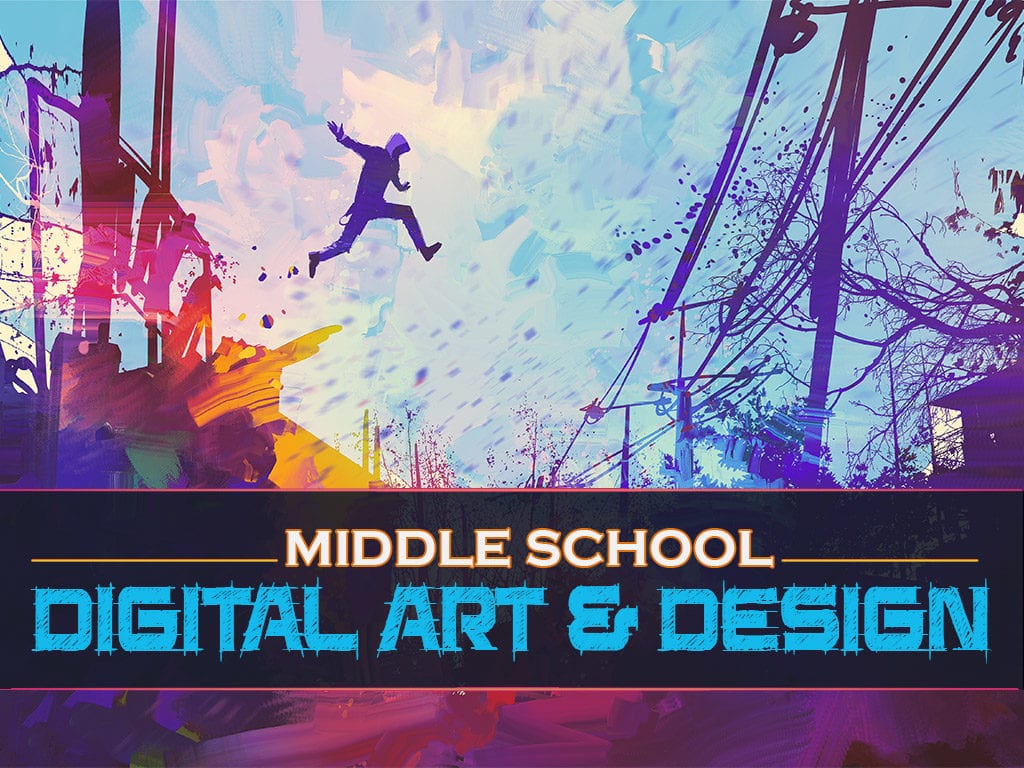
Middle School Digital Art and Design
The world is filled with so many different forms of art – including digital art. In this course, you’ll explore this special genre of art found in everything from advertising to animation to photography and beyond. Additionally, you’ll tap into your creative side to create digital art and make it come alive!
Units at a Glance
Unit 1: 21st Century Art
What do you think of when you hear the words digital art? Did you think about the last photo you took? It was probably taken with a digital camera, or even your phone. How did you share the picture with your friends and family? Do you ever make changes to pictures you see or take, whether by hand or on the computer? Sometimes adding funny pictures, words, or drawings to your sibling’s or friend’s face is the best part! All of these are part of the growing field of digital art and design. Discover what it means to be a digital artist or designer — who knows, it could be your dream job!
What will you learn in this unit?
- Define digital art and design.
- Distinguish between digital art and design and other art forms.
- Identify the traits of digital artists.
- Explore careers in digital art and design.
Unit 2: Say Cheese!
Can you feel it? You are getting ready to become one in a long line of great artists. You are going to learn to be a photographer. Through the lens of your camera, you will capture the world around you. Click! A picture of you and your best friend. Click! A snapshot of your puppy sleeping in the sun. Click! A photo of your apartment building against a cloudless blue sky. When you shoot a picture, you capture a moment in time and preserve it for others. Studying the art of photography in this unit will teach you how to take a beautiful picture, to really make a work of art. Famous photographer Ansel Adams once said, “I hope that my work will encourage self-expression in others and stimulate the search for beauty and creative excitement in the world around us.” We hope this unit inspires the same kind of “creative excitement” in you!
What will you learn in this unit?
- Compare and contrast the early history of photography to modern day digital photography.
- Identify and apply the elements of art and principles of design in photography.
- Understand and use photographic composition.
- Explain the process of editing photography and describe the tools used to do it.
Unit 3: The Evolution of 2-Dimensional Art
Where is digital art around you? On the wrapper of the burger from your favorite take out place? Rolling across your computer screen as you search the web? In the special effects of your favorite movie? Today, digital art is everywhere. But we are not the first society to value art. That tradition dates back to the Stone Age! Both 2D and 3D art play an important role in the artistic forms of the past and present. In fact, today’s digital artists often need to know how to move back and forth between these two types of art. Fortunately, there are a lot of ways for artists to think about space in both dimensions. Are you ready to learn some of their techniques?
What will you learn in this unit?
- Describe 2D digital art and understand its uses.
- Compare and contrast digital 2D and 3D art.
- Understand and apply specific elements used in 2D digital design.
- Recognize the limitations of 2D digital art.
Unit 4: Graphic Design
When you get advertisements in your mailbox, do you look at the products to see if there is something you like? The graphic artist who designed the flier certainly hopes you do! Graphic design combines the power of text and pictures to create persuasive images that communicate a specific message. It is used in advertising, entertainment, and politics. There are many ways in which art and language work together to educate and inform us. Sometimes that information provides important life-saving safety instructions, other times it is as simple as letting you know that your favorite restaurant has a new flavor of milkshake. One thing is for sure though—graphic art has a lot to say!
What will you learn in this unit?
- Define graphic design and its commercial uses.
- Recognize the tools used to create graphic art.
- Describe pop art and its influential artists.
- Identify street art and understand its purpose in society.
Unit 5: Magic in Motion: Animation
Have you ever stopped to count how many times you see animation in a day? Animation isn’t only in movies and cartoons. It’s in video games, interactive websites, smartphone interfaces, and so much more. If you stop and think about it, you’ll likely be surprised by how much animation is in your day. Although animation started off simply, it has become a big part of popular culture. But don’t blink! The animation industry is changing faster than the speed of motion in an animated short. However, with the right skills and mindset, you could become an innovator in this evolving art field!
What will you learn in this unit?
- Describe the different types of animation.
- Understand how digital animation is an art form based on technology.
- Explain the basic principles of 2D and 3D animation.
- Develop a basic understanding of intellectual property rights.
Unit 6: Sound and Music
Whether it’s in the background of a commercial, a dog barking on a television program, the squealing sound of tires during a movie, or a song streamed from your phone, we experience music—and the work of digital artists—every day. How often have you turned on your television or clicked open a music app just to have something playing in the background while you read, study, or do chores? Music is definitely part of our everyday lives, having evolved over time due to technology and our changing tastes. Like other forms of art, music tells us a lot about what is currently happening in society. When it comes to the digital arts, sound is another important piece of the puzzle.
What will you learn in this unit?
- Identify how digital music and sounds fit into the larger picture of digital art and design.
- Examine the roles of musicians and sound producers in digital design.
- Discover how music has evolved over time and how it is relevant to our lives today.
- Understand the role of technology in the production and sharing of music.
Unit 7: How to Look at and Evaluate Art
What makes a piece of art famous? What do critics think about when they are deciding if something is good or not? You’ll explore these questions and more as you learn how to think like an art critic. Artists have their own process when they are creating art, and they spend a lot of time expressing their ideas. Next, it’s the critic’s turn to decide how well the artist has done their job. Fortunately, critics have a set of standards that they use when viewing art, and you can use them too. After all, part of appreciating art is knowing what to look for when you are standing in front of it. This can also help you make your own art the best that it can be!
What will you learn in this unit?
- Analyze the form and content of art.
- Identify qualities of great art.
- Apply the principles of design when critiquing art.
- Use methods of critique to analyze your art.
- Understand suitable audience behavior when viewing art.
Unit 8: Mixing Up Art
Think about your favorite piece of art. What colors did the artist use? Are they bright and bold to catch your attention? Or are they pale and soothing? A mixture of both? The artist probably thought a lot about color since it is one of the most important tools that artists have. Artists can also mix different types of art or materials to make a new work. Maybe they add 3D elements to a painting. Or perhaps they project a film onto a wall behind a sculpture as part of an exhibit. There is no end to the ways in which elements of art can be combined for innovative work! If you have a talent for this, include it in your portfolio. This sample of your work will be an important part of pursuing your career in the digital arts!
What will you learn in this unit?
- Describe the components of color.
- Create mixed and multimedia art.
- Articulate the intent of personal work.
- Put together a portfolio.
Required Materials
- Digital camera or camera phone
- Drawing paper and colored pencils / markers or drawing software / animation software (will need to create a logo and a character that could be animated)
- A computer or phone with a recording feature/app (will need to record a “radio” commercial)
